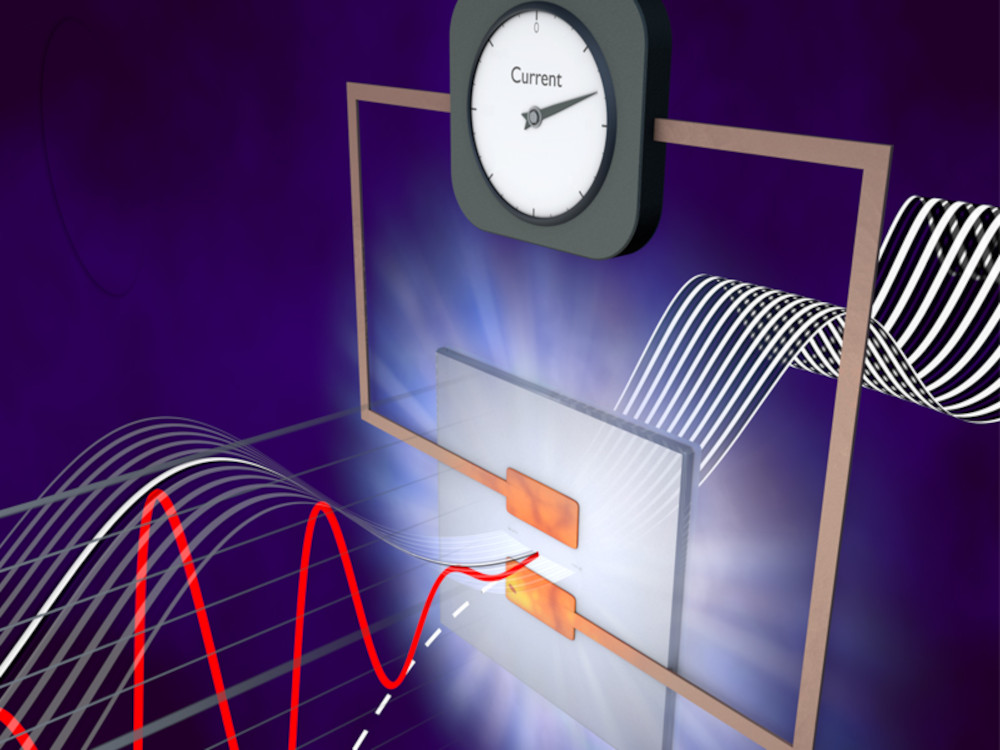
03 Jan Shaped light accelerates digital switching
With the help of precisely shaped light pulses, an international team of researchers has succeeded in switching the electrical current in a semiconductor – in this case gallium nitride – on or off at what the researchers claim is an unprecedented speed of less than 2 femtoseconds. The team from Monash University in Melbourne, Australia, and the Max Planck Institute of Quantum Optics (MPQ) in Garching, Germany, generated light pulses from just a few oscillations. This result should pave the way for the development of optically controlled electronic devices that operate at far higher frequencies than is currently possible.
“The time it takes to switch the electrical current in a semiconductor on and off determines the performance of electronic devices,” explains project leader and ARC Future Fellow Dr. Augustin Schiffrin, who is now conducting research at Monash University in Australia. “By using the fastest tools available – specially shaped optical laser pulses of a few oscillations – we were able to control electrical currents in semiconductors thousands of times faster than in conventional electronics.” Dr. Stanislav Kruchinin from MPQ explains: “We successfully tested how these devices work by comparing the behavior of circuits made of different materials, gallium nitride and fused silica.” In both cases, the laser field induces interference of the electronic excitations, which can be controlled on the femtosecond time scale, according to the scientist. “Our current setup already works at much lower field intensities than are required for dielectric materials. You can therefore work with non-amplified laser pulses.”
Original publication:
[T. Paasch-Colberg, S. Yu. Kruchinin, Ö. Sağlam, S. Kapser, S. Cabrini, S. Muehlbrandt, J. Reichert, J. V. Barth, R. Ernstorfer, R. Kienberger, V. S. Yakovlev, N. Karpowicz and Agustin Schiffrin, Sub-cycle optical control of current in a semiconductor: from the multiphoton to the tunneling regime, Optica, 14 November 2016, DOI: 10.1364/OPTICA.3.001358]
Image: Christian Hackenberger
Source: www.mpq.mpg.de






